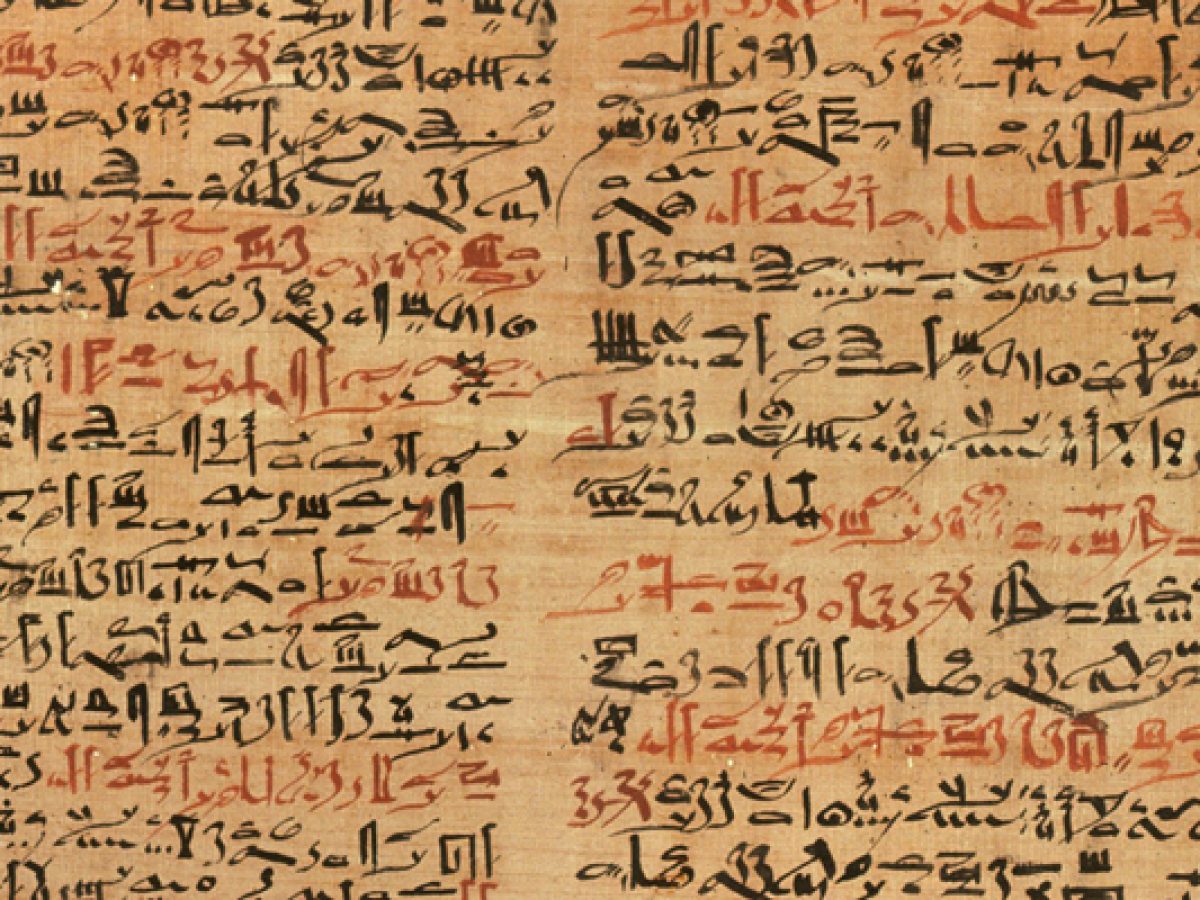
The Edwin Smith Papyrus dates to Dynasties 16–17 of the Second Intermediate Period. Due to its practical nature and the types of trauma investigated, it is believed that the papyrus served as a textbook for the trauma that resulted from military battles. The relationship between the location of a cranial injury and the side of the body affected is also recorded, while crushing injuries of vertebrae were noted to impair motor and sensory functions. The influence of brain injuries on parts of the body is recognized, such as paralysis.

The procedures of this papyrus demonstrate an Egyptian level of knowledge of medicines that surpassed that of Hippocrates, who lived 1000 years later. Here, the word ‘brain’ appears for the first time in any language.

It contains the first known descriptions of the cranial structures, the meninges, the external surface of the brain, the cerebrospinal fluid, and the intracranial pulsations. The papyrus also describes realistic anatomical, physiological and pathological observations. Immobilization is advised for head and spinal cord injuries, as well as other lower body fractures. In many of the cases, explanations of trauma are included to provide further clarity.Īmong the treatments are closing wounds with sutures (for wounds of the lip, throat, and shoulder), bandaging, splints, poultices, preventing and curing infection with honey, and stopping bleeding with raw meat. Following the examination are the diagnosis and prognosis, where the physician judges the patient’s chances of survival and makes one of three diagnoses: “An ailment which I will treat,” “An ailment with which I will contend,” or “An ailment not to be treated”. The objective examination process included visual and olfactory clues, palpation and taking of the pulse. The title of each case details the nature of trauma, such as “Practices for a gaping wound in his head, which has penetrated to the bone and split the skull”. The papyrus begins by addressing injuries to the head, and continues with treatments for injuries to neck, arms and torso, detailing injuries in descending anatomical order like a modern anatomical exposition. Presented cases are typical, not individual. The rational and practical nature of the papyrus is illustrated in 48 case histories, which are listed according to each organ. The text is attributed by some to Imhotep, an architect, high priest, and physician of the Old Kingdom, 3000–2500 BCE. It is believed that the papyrus is an incomplete copy of an older reference manuscript from the Old Kingdom, evidenced by archaic grammar, terminology, form and commentary. The papyrus ends abruptly in the middle of a line, without any inclusion of an author. The majority of the papyrus was written by one scribe, with only small sections copied by a second scribe. Generic spells and incantations may have been used as a last resort in terminal cases.Īuthorship of the Edwin Smith Papyrus is debated. The spells of the verso side and two incidents in Case 8 and Case 9 are the exceptions to the practical nature of this medical text. The verso side consists of eight magic spells and five prescriptions. Each case details the type of the injury, examination of the patient, diagnosis and prognosis, and treatment. On the recto side, there are 48 cases of injury. The vast majority of the papyrus is concerned with trauma and surgery, with short sections on gynaecology and cosmetics on the verso.

It is written right-to-left in hieratic, the Egyptian cursive form of hieroglyphs, in black ink with explanatory glosses in red ink. Aside from the fragmentary outer column of the scroll, the remainder of the papyrus is intact, although it was cut into one-column pages some time in the 20th century. The recto (front side) has 377 lines in 17 columns, while the verso (backside) has 92 lines in five columns.

The Edwin Smith papyrus is a scroll 4.68 meters or 15.3 feet in length.


 0 kommentar(er)
0 kommentar(er)
